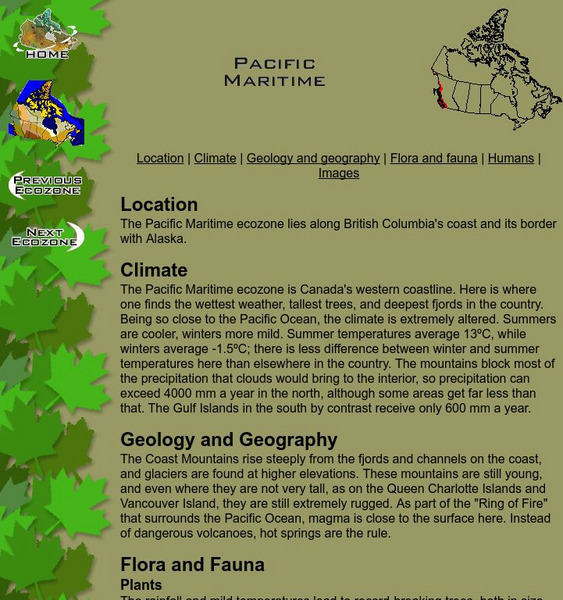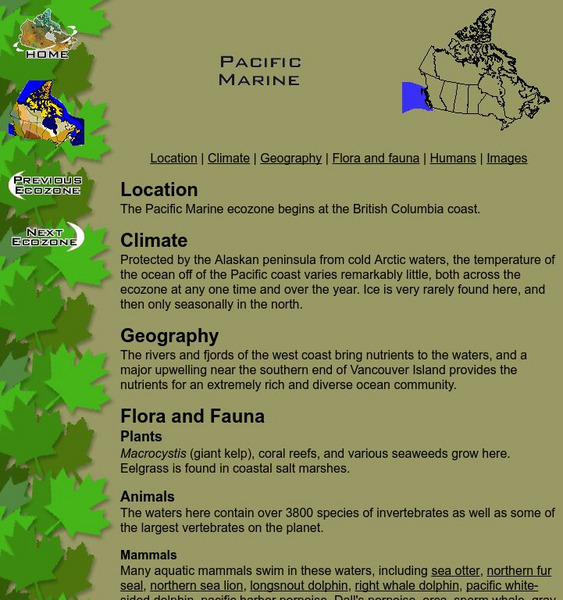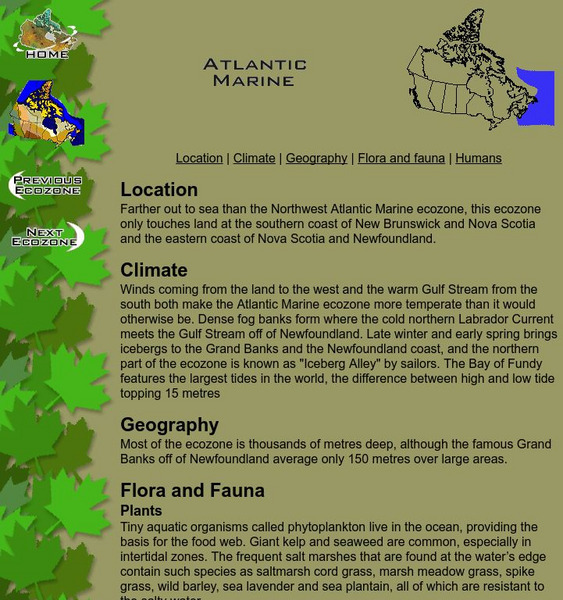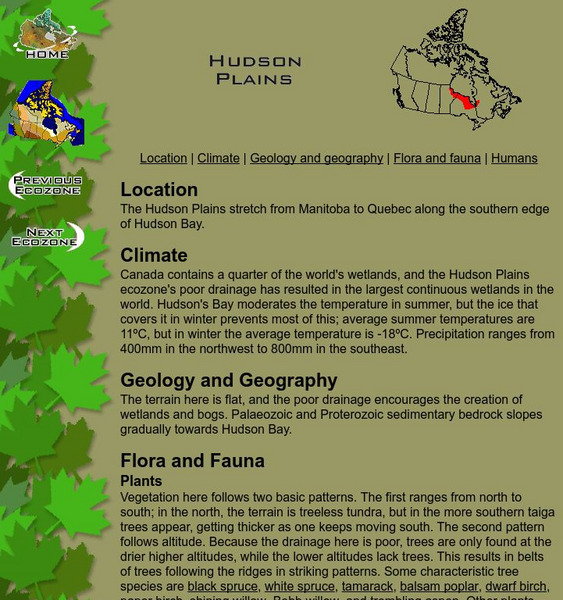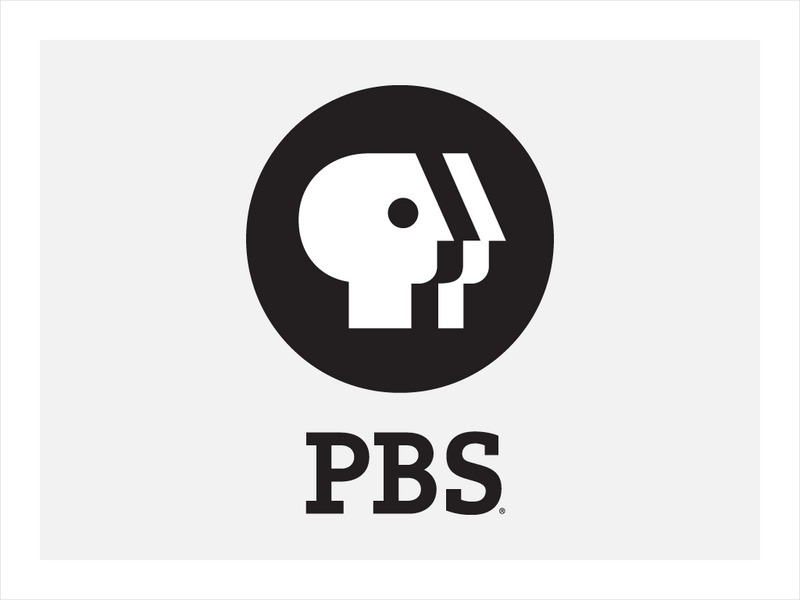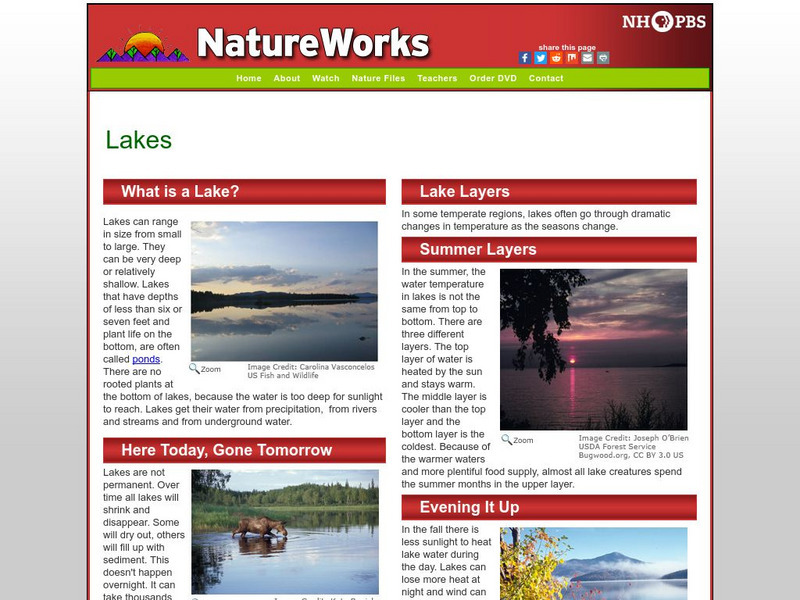McGill University
Mc Gill University: Canadian Biodiversity: Ecozones: Taiga Shield
This ecozone stretches eastward from the Taiga Plains to just south of the Southern Arctic. This brief, concise description includes a collection of images of the animals and birds native to the location. Many of the images include...
McGill University
Mc Gill University: Canadian Biodiversity: Ecozones: Boreal Plains
The Boreal Plains are located in the center of Alberta and extend into Saskatchewan and Manitoba. This is a brief, concise description of the location, climate, geology and flora and fauna. It includes a collection of images of the...
McGill University
Mc Gill University: Canadian Biodiversity: Ecozones: Prairies
This Prairies ecozone covers southern Alberta, Saskatchewan, and Manitoba. This brief, concise description includes a collection of images of the animals and birds native to the location. Many of the images include descriptions.
McGill University
Mc Gill University: Canadian Biodiversity: Ecozones: Taiga Cordillera
The Taiga Cordillera extends along the border of the Yukon and Northwest Territories. This is a brief, concise description of the location, climate, geology and flora and fauna. It includes a collection of images of the landscape as well...
McGill University
Mc Gill University: Canadian Biodiversity: Ecozones: Boreal Cordillera
This Boreal Cordillera contains the mountains of the southern Yukon and northern British Columbia . This brief, concise description includes a collection of images of the animals and birds native to the location. Many of the images...
McGill University
Mc Gill University: Canadian Biodiversity: Ecozones: Pacific Maritime
The Pacific Maritime ecozone lies along the British Columbia coast and it's border with Alaska. This is a brief, concise description of the location, climate, geology and flora and fauna. It includes a collection of images of the...
McGill University
Mc Gill University: Canadian Biodiversity: Ecozones: Montane Cordillera
The Montane Cordillera covers most of southern British Columbia and some of southwestern Alberta. This is a brief, concise description of the location, climate, geology and flora and fauna. It includes an excellent collection of images...
McGill University
Mc Gill University: Canadian Biodiversity: Ecozones: Pacific Marine
The Pacific Marine ecozone begins at the British Columbia Coast. This is a brief, concise description of the location, climate, geology and flora and fauna. It includes some images of the animals and birds native to the location. Many of...
McGill University
Mc Gill University: Canadian Biodiversity: Ecozones: Atlantic Marine
The Atlantic Marine ecozone is located father out to sea and touches land at the southern coast of New Brunswick and Nova Scotia and the eastern coast of Nova Scotia and Newfoundland. This brief, concise description includes a collection...
McGill University
Mc Gill University: Canadian Biodiversity: Ecozones: Hudson Plains
The Hudson Plains ecozone stretches from Manitoba to Quebec along the southern edge of the Hudson Bay. This is a brief, concise, description of the location, climate, geology and flora and fauna. It includes a collection of images of the...
E-learning for Kids
E Learning for Kids: Science: Pacific Ocean: What Can We Find on a Beach?
Josephine lives on the Marshall Islands. Follow her to the beach and find out what kinds of plants and animals live there.
McGill University
Mc Gill University: Canadian Biodiversity: Ecozones: Mixedwood Plains
This Mixedwood Plains ecozone extends along the Quebec City- Windsor corridor and the densely-populated region of Southern Ontario. This brief, concise description includes a collection of images of the animals and birds native to the...
Alabama Learning Exchange
Alex: Where Does Our Waste Go?
In this lesson plan from "The Friends of Auntie Litter", (www.auntielitter.org), waste disposal will be explored. The Pollution Patrol follows the steps involved in trash disposal, starting with a girl tearing a sheet of paper out of her...
Other
Temperate Forest Organization: Temperate Forest
Provides links to sites such as forestry, population, management, diversity, and fire. There are lesson plans, tours and educational links for teachers.
PBS
Nh Pbs: Nature Works: Wetlands
Did you know that wetlands are frequently used as resting stops for migrating birds? This is just one of the many interesting facts found within this educational resource. This site features information on the characteristics, types,...
McGill University
Mc Gill University: Canadian Biodiversity: Ecozones: Boreal Shield
The Boreal Shield runs from Alberta to Newfoundland. This is a brief, concise description of the location, climate, geology and flora and fauna. It includes a collection of images of the landscape as well as those of animals and birds...
National Center for Ecological Analysis and Synthesis, University of California Santa Barbara
Kids Do Ecology: Learn About Ecology
This resource provides information about ecology.
E-learning for Kids
E Learning for Kids: Science: Caribbean Sea: Pirates: What Are Some Common Habitats?
Pete is shipwrecked and exploring environments around him. Want to join him as he learns about plant and animal habitats?
Science Education Resource Center at Carleton College
Serc: Discovering Nature in Our Neighborhood: Investigating Natural Communities
Students examine the natural surroundings around the school and identify micro-communities of plants, insects, and other animals through walks and nature journaling.
Cornell Lab of Ornithology
Habitat Network: Wildlife Habitat Category in the Groups Data Visualization
Habitat Network has combined all the vegetatively-complex habitat polygons into categories here.
PBS
Pbs Kids: Plum Landing: Jungle Rangers
Players head out to Borneo to explore the rainforest in this photo safari. Earn points by following clues to take pictures of specific plants and animals.
PBS
Nh Pbs: Nature Works: Lakes
What is a lake? Discover the answer to this question when you explore this informative resource. This site provides information on how temperature and seasonal changes effects lakes, how lakes are formed, how lakes compare in numbers to...
Science Struck
Science Struck: The 6 Chief Levels of Organization in Ecology
Describes six levels of organization in the biological world - individual species, population, community, ecosystem, biome, and biosphere.
A to Z Teacher Stuff
A to Z Teacher Stuff: The Great Kapok Tree (Lesson Plan)
Help your young scholars develop an understanding of a rain forest ecosystem and the environment through this social studies lesson.







